Heath Hicks - Put Safety First with Job Site Protection - PODCAST TRANSCRIPT
July 10, 2025 at 3:00 p.m.Editor's note: The following is the transcript of a live interview with Heath Hicks of The Catch-All. You can read the interview below or listen to the podcast.
Intro: Welcome to Roofing Road Trips, the podcast that takes you on a thrilling journey across the world of roofing. From fascinating interviews with roofing experts to on the road adventures, we'll uncover the stories, innovations and challenges that shape the rooftops over our heads. So fasten your seat belts and join us as we embark on this exciting roofing road trip.
Heidi Ellsworth: Hello and welcome to Roofing Road Trips from RoofersCoffeeShop. This is Heidi Ellsworth and today I'm really excited about this podcast. We're going to be talking about safety, but in a very progressive way.
Heidi Ellsworth: On really how do you take products that really help you on the job site overall, but also are essential to safety. So we brought the expert in the field who knows all about this, Heath Hicks from the Catch-All to Roofing Road Trips today to talk about it. Good morning, Heath.
Heath Hicks: Good morning. How are you doing, Heidi?
Heidi Ellsworth: I am doing great. I love hearing about your products. You have one of the most inventive minds out there in roofing. I just love seeing everything that's coming out. And your real focus on safety, I think, which is so important. But before we dive in, which I just did, let's start with an introduction. If you could introduce yourself and tell us about your company.
Heath Hicks: Sure. Awesome. Well, yeah, my name is Heath Hicks. I own a roofing company in Texas called AVCO Roofing. Been in the roofing industry now for about 15 years, 16 years, something like that. And in the process of growing our roofing company, myself and my partner in the Catch-All, Eric McIntosh, invented a system called the Catch-All that helps protect the job site during residential roof installation.
Heath Hicks: And then from there we've invented several other products along the kind of the same route. Some of them are similar, some of them are different. Some of them do kind of an extension of the original product. So yeah, now I'm basically full-time with that and trying to invent stuff every day to make the job site better, safer, cleaner.
Heidi Ellsworth: I love how you say that, basically full-time with that. I don't know if I could ever keep up with your schedule and what you do. That is awesome.
Heidi Ellsworth: Well, I know it feels like we just finished IRE. It's been a month now. But I know you had a lot of new stuff, a lot of great new products that you shared at IRE. Can you tell us about your three new products that are designed to improve safety on the roof? Because I think this is so great. Or on the job site.
Heath Hicks: Sure. Yeah. One of the first ones, it's called the AC Shield. It's kind of an extension of our Catch-All system. So it's a system of nets and poles that cover the AC unit while you're doing a roofing tear off and installation just to keep debris off of and out of the AC unit.
Heidi Ellsworth: Nice.
Heath Hicks: And basically every job site that you go to, you'll see the crew in some way trying to protect the AC unit, whether there's a sheet of plywood on the top or a piece of foam on the top or a tarp over it or something. There's almost always some version of protection for that unit, but many of them are not good for the unit.
Heath Hicks: And in some parts of the country, it's a very regular part of their process to ask the homeowner to just not run their air conditioning unit all day so they can cover it. And here in Texas, you can't get away with that in the summer. You cannot stop it. It has to be running all day and that's not the greatest way to deal with that unit.
Heath Hicks: You really want to protect it in a way that it can keep running. And when I was in the field every day doing roofing, I had figured out some ways. But they were pretty cumbersome and time-consuming to set up and take down with a bunch of sheets of plywood and maybe a piece or two of netting from the crew trailer or something like that.
Heath Hicks: But we extended our system from the Catch-All and used some of those same parts and pieces we made and invented a unit that really covers the AC unit. And it covers basically 95 to 98% of all units out there as far as size go from the small ones to the big ones. And just keeps all the debris off of it and keeps all the granules and nails out of it.
Heath Hicks: But it can continue to run all day because it's not suffocated or stifled or anything. And so we're really excited about that. We've sold a ton of those right off the bat because it's kind of a no-brainer product. It's not very expensive.
Heath Hicks: It packs down into a small bag that'll fit in the back of your truck, back behind the seat of your truck or something like that and you can just reuse it over and over again. And saves you a lot of money in the long run. You only have to hurt one air conditioner a year to cost yourself a lot of money.
Heidi Ellsworth: Yeah. And when you really think about it, like you said, in Texas and all over the country, we're talking over 100 degrees most days once the summer hits. So that's a safety factor in itself. And then just being able to protect that air conditioning unit so you're not pulling debris in or damaging the unit overall.
Heath Hicks: Yeah, it's an exciting product. We're excited to get out in the market. It's in pre-order right now, but it's on its way here really soon.
Heidi Ellsworth: Okay. What about the Roof Step? And why is it such an important upgrade option for the homeowners? I'm interested in that.
Heath Hicks: Yeah, we got a lot of really good attention on that at the show because we had a big display there where you could see it and try it out and step up on it. So if you're curious about the description, you're going to have to go look it up because it's a little bit hard to picture, but maybe you guys can cut in some B roll or something.
Heath Hicks: But basically it's a permanent access point that the roofer would install during the installation of the job so that the homeowner and other contractors would have a safer place to access the roof. So it is basically just what it says. It's a step that you install in the valley corner between the two sides of the valley, above the gutter.
Heath Hicks: It has some hooks in it to hold the ladder, receive the ladder, so when you climb up and down, the ladder doesn't shift or fall backwards or forwards. And then there's a platform that is left there when you install it, that you step off of the ladder onto a very rigid, stiff steel platform that is made to look really nice.
Heath Hicks: You can paint it to match the trim or the gutter or whatever color is appropriate so it doesn't stand out quite as much. That just provides a place for you to be able to step off the ladder onto a really firm level platform. So that from there you can access the roof instead of trying to step around the ladder and get up onto the pitch of the roof.
Heath Hicks: Especially now that most gutters are getting to be six-inch gutters and now you're even farther. You have to step around and get your foot up onto the roof and roofers do it all day so they're not as uncomfortable with it. But at the same time, roofers fall all day. Every day there's roofers fall off the roof getting on and off the ladder.
Heath Hicks: And there's, depending on the year, somewhere around between 600 and 1,000 homeowners a year die at their house accessing the roof.
Heidi Ellsworth: Whoa.
Heath Hicks: Hanging Christmas light, cleaning gutters, looking at leaks, looking at some blown-off shingles from a storm. And they don't typically fall off of the roof itself. They typically fall when they're getting onto the roof. So they're still partially on the ladder or they're getting onto the ladder when they're coming down.
Heath Hicks: And I've had more homeowners than I can remember in the last 15 years doing roofing that I've heard about that either just fell right before I got there. Or I find out right after we did the job that the husband or whatever fell trying to clean out the gutters or just go look at the roof. And it's just not a safe thing to do.
Heath Hicks: And the mindset around commercial roofing is a lot better. People realize they need to be safe because typically the roof access points are higher, they're going to be on the roof longer and they're just more prepared. And OSHA is a lot stricter around workplace stuff and so people getting up and down on commercial roofs are typically keeping their mind wrapped around safety in some way or another.
Heath Hicks: But when you're at a home, oftentimes the homeowner or the contractor that might be fixing the leak in the chimney that's not roofing or someone looking at a window repair or siding repair up there. And especially roofers, they just don't consider it because they do it all day long and they're up and down so fast. If they're just popping up there to check where a leak is at real quick or to take a couple pictures to write an estimate, they get up and down so fast.
Heath Hicks: And so they're doing it so many times a day and there's not really a good way to tie off on an average residential roof. There's certainly not a good way to rope off. And so it's just with all that high volume of access. Just up and down and up and down from roof to roof to roof, people fall.
Heath Hicks: And we want to change that mindset and provide every home with a safer access point than what exists right now. And it's not safe of course and getting up and down on a roof is never going to be safe, but we believe this is a safer way to get up and down.
Heidi Ellsworth: Yeah, I love that. And one of the things that makes me think about, Heath, is we are starting to see the growth of residential service. Where contractors are putting service programs together with their homeowners to come out and clean the gutters, to check, do inspections once or twice a year.
Heidi Ellsworth: What a great addition for a contractor as they are installing a roof to install the Roof Step and make that also part of their service and maintenance program that they're going to do for residential.
Heath Hicks: Yeah, absolutely. If you had the contractual inspections and repair relationship with that customer, you could just offer it as an upgrade to that. That you contract all the Roof Steps so that we can get up and down safely.
Heath Hicks: It'll be here for as long as your home is here and you'll have it for everybody to use, yourself included. But it'll come with our contract. In the re-roof scenario, it's basically just an upgrade, which will increase the revenue and the margin on the job 800 to $1,000, something like that.
Heidi Ellsworth: And the safety for the homeowner.
Heath Hicks: I mean the safety factor. I mean, most homeowners are going to go, "Yeah, that sounds like a really good idea." Whether or not they want to pay for it, maybe that's salesmanship on the roofing salesman's part and/or maybe some budget consideration for the customer.
Heath Hicks: But everyone that we've shown it to, whether in person or in videos and some of our testing scenarios, everyone's like, "Yeah, that seems like a really great idea." So there's not a lot of resistance to it other than some people are like, "Aesthetically, I'm not really sure. I'm not sure if it's really going to stand out too much."
Heath Hicks: But the way we designed it, it's not an eye sore. It looks like it's designed to be a decorative part of the roofing system. But just being able to go to a job as a roofing salesperson and offer an upgrade that makes a lot of sense that homeowners are going to be highly interested in that you can also feel good about. We like the way that sounds and we think it's going to sell well.
Heidi Ellsworth: I think so too. And when you're in that home selling, whether you sell it as an upgrade for safety for the homeowner or you really have that conversation with the homeowner of, "Do you really want to get up on your roof? But we will and we're going to install the safety equipment to make that easy and good for you or anyone else who has to get up onto your roof." It makes total sense. I can really see that. I think that's brilliant. I love it.
Heath Hicks: What did you think when you saw it? Because you saw it, right?
Heidi Ellsworth: Yeah, I thought it was great. You're right, it looks ornamental and it makes sense to me. It kind of, as you can tell my mind, Heath, our marketing minds tend to kind of go there. And I'm kind like going, "Oh, this is a great tool to start talking about service and maintenance." This is a way to do it. Yeah.
Heath Hicks: It can be a fun little way to generate some online ads that would differentiate your roofing company. Not just, "Hey, you need a new roof." Or, "Hey, do you have a leak offering." Offering a safety-
Heidi Ellsworth: Roof safety.
Heath Hicks: Yeah, just to see who would click on that. It's going to be a different group of people that maybe look past all the other ads and might click on that. So I'm interested to see what people are going to be able to do with it.
Heidi Ellsworth: I love it. I love it. And when you think about it, there's so many things. I mean, there's cleaning out vents. I mean, there's just a lot of stuff that somebody is getting up there. And to have that as a safety factor. Because it also reduces the risk for the homeowner, whether they're doing it or whether they have other people getting up on the roof, that is a risk reduction.
Heath Hicks: Yeah, absolutely. I think in the long run, I think homeowners insurance will probably take into consideration if you have a Roof Step. And they'll actually start really pushing you towards having something like that and/or a permanent access point to rope in right above that. Just so that there is an easy, safe way to get roped in. To tie out the ladder, have a safe access and then an easy place to rope in.
Heath Hicks: I think in the long run, that's going to be something insurance really considers. Because homeowners nowadays, a lot of them are really concerned about it. When I started out roofing, homeowners didn't really think about it. But now it's very common for the homeowners to really want to see your insurance and vet it and make sure that it's really real so that if someone gets hurt, it doesn't come back on them.
Heidi Ellsworth: Exactly.
Heath Hicks: People are educated as that industry is expanding and things are getting more and more litigious as time goes on.
Heidi Ellsworth: They are. It is. And just the overall amount of people who are on your roof now I think has led to that too, because we didn't used to have as many people on the roof. But now you have telecommunications, you have satellites, adjusters, across the board. So you had a third product that I am also very excited about. And that is your Pool Shield. Tell us about that.
Heath Hicks: Yeah, so we've had a lot of contractors over the years ask us if we have a pool cover made out of the same proprietary netting stuff that we use for the Catch-All. And for a long time we didn't really see the need. We weren't really sure why people were asking so much.
Heath Hicks: But when we dug in, we realized that there's a big safety issue if someone falls into a pool while there's a tarp on it. And that seems a little bit obvious. If you were to fall into a pool and you fell into the tarp and you were laying down, you would have no way to swim. It'd be very difficult to get out. And if you were in the wrong position, I could easily see you being stuck or suffocated.
Heath Hicks: And so I felt that one right away. But what I didn't realize is that people fall in there more often than you think because when they put those tarps out, they'll just pick their big tarp. They've got a bunch of tarps, they picked a really big one that'll cover the whole pool or most of the pool. But when they put it over the edge, they're using shingles and stuff to lay it down.
Heath Hicks: And it normally covers a lot of the deck as well because cover up the deck of the pool to try to keep it from getting marked up or scratched or whatever. And so then when you're walking back and forth, you can't see where the edge of the pool is because the tarp covers the whole pool and the deck. And if they stretch it tight, a lot of times you're just not sure. And so it was more common that I thought for people to step off that edge and maybe not make it all the way into the pool, sometimes they do. Sometimes the tarp is still there, anchored somewhere where they can get out or whatever.
Heath Hicks: But in a worst case scenario, that's not an experience anybody would want to have at a job site. And so when I realized that, thinking back through job sites and I visited a few, I was like, "I guess if you're in a hurry, especially if you're rolling that wheelbarrow around or something and you're not paying total attention. Or you can't really see because that just looks like a big uniform blue or gray surface from that tarp." I'm like, "Yeah, I can see how people would end up in the pool."
Heath Hicks: And so when we figured that out, we went ahead and made one and people are really excited about it. We sold a lot of those too. Yeah, it's made out of the same netting we have, so you can clearly see the pool underneath the net. Whether or not it has a cover, obviously we recommend using it over a real pool cover so that if somebody fell in those, typically the pool covers are built to handle that.
Heath Hicks: But whatever scenario it's in, you can very clearly see the edge of the pool where it terminates and where it starts and avoid falling into the pool. But it also still keeps the debris out, keeps granules out. Our netting has a fine enough mesh to it that it keeps granules still from landing in the pool and obviously keeps out all the trash and debris and nails and stuff like that.
Heidi Ellsworth: Yeah. And makes cleanup so much easier.
Heath Hicks: Totally. Yep, sure does.
Heidi Ellsworth: Yeah. I mean that's been across the board all along. But when you think about it now, you are expanding out around the house to make that cleanup even easier across the board. And I know that's been a lot safety, also the cleanliness of the job site have been top motivators for you as you have been inventing and putting these products together.
Heath Hicks: Yeah, we definitely were trying to solve initially the trash and cleanup problem just on our own job sites. At my roofing company, that's what we invented it for. But very quickly we realized the marketing power of the unit. Once it has your branding all the way across the side of it, it's like a big billboard all the way around the house where everyone can see exactly who's doing the roof.
Heath Hicks: And nowadays, you can just look at the banner and click on the QR code and set an appointment or ask for an inspection. Or call the company or whatever it is, right from your yard on the other side of the street, a couple houses down. You can just scan the QR code and get an appointment or just call the company. And we see thousands of uses of the QR codes per month. They kind of run through my back end system so I can see when people use them.
Heath Hicks: I can't see any of their information or anything, but the way the QR codes are set up, I can tell every time someone uses one. And we get thousands and thousands of uses every month of customers-
Heidi Ellsworth: That's great.
Heath Hicks: All around the country using those QR codes to contact that company. And the sales potential. When you're a good salesperson and you can really differentiate yourself with how much your company does to protect the customer and their investment and go above and beyond. Really once the company gets it in their hands, that's the most powerful part of it, it's really the sales part.
Heath Hicks: It helps you close deals and build some good rapport and expectation of good performance. And people feel more interested, more comfortable using a company that's going to really go out of their way to protect their asset like that. So it's powerful all the way around.
Heath Hicks: And some of those things I didn't see, I didn't understand when we first built it because we weren't really trying to build a marketing tool or sales tool. We were just trying to basically just keep the nails out of the grass and the flower belt because they're so hard to get out once they get in there. You can roll your magnet all day long, but you're going to leave a bunch of nails behind no matter how you do it.
Heath Hicks: And the key for us was just figuring out how to keep the nails from ever hitting the ground because once they're there, they're really hard to get them all back. And so we pushed really hard for that and then found several other layers of benefit. And right now, most of our customers that are buying it are choosing it for the marketing value. It's really what there's, it is their kind of lever that they're using to actually make the purchases.
Heath Hicks: They can see the return on investment from a marketing and lead generating standpoint. So it's been a really cool ride. I've really enjoyed it, stepping into a different seat in the industry and doing something different than roofing. It's been good. I've enjoyed it all.
Heidi Ellsworth: It's fun. When you really look at it, you've got three such incredible messages when it comes to job cleanliness and just protection of the assets. Like you said, protection of the house, but also then the safety elements across the board from the original Catch-All. I mean that has a lot of safety.
Heidi Ellsworth: When you think about the homeowner and protecting and everything. And then all these new products. And then marketing on top of it, it really kind of hits every, checks every box for the contractors. You talk to a lot of contractors, Heath.
Heath Hicks: Oh, yeah.
Heidi Ellsworth: What are some of the things that you kind of talk to them about marketing? Obviously the QR code and the branding on the Catch-All, but also how do you talk to them about incorporating your original products and now these new products into the sales process? And really using, see if I say this the right way, but I see them as marketing tools during that sales presentation because you're differentiating yourself from your competition.
Heath Hicks: Yeah. One thing that I talk a lot about when I'm at roofing conferences is this idea of hyper local marketing. Where you're really focusing on the exact set of customers or neighborhood or small region that you really want to work in.
Heath Hicks: And you're hitting them from all these different angles, whether it's mailers, online ads, really condensed areas, specific neighborhoods. Nextdoor app, yard signs, banners, the Catch-All, things like that, keeping your marketing efforts really focused. And a lot of those are on the lower cost side as well because you're not trying to blanket a whole area.
Heath Hicks: But if it's an area that you're already working in and you already have some presence and you have some roof sold or you're about to build some roofs and you turn on this approach, hyper local marketing. Where you're really kind of giving them five to six different ways to get impressions of your company and who you are while they're also seeing you come in and out of the area, in and out of their neighborhood.
Heath Hicks: They're seeing your truck at the gas station. They're seeing your vans rolling up and down the street and they see your trailer and your Catch-All in jobs you're doing. When it comes time to do a roof, whether you knock on their door or you don't, they're going to think of you.
Heath Hicks: It's a much lower cost way than just trying to get on the radio across the whole city or put billboards up everywhere. And a lot of times you're generating leads in areas you really don't want to work in with customers you don't particularly want to work with or houses or roofing systems that really don't want to work with. But when you really focus it, you can really basically select which customers you're really marketing to and which ones are going to be calling you.
Heath Hicks: The system is a big part of that because it generates leads for you. And if it has generated a lead for you, when you go there and it's a part of your presentation, it's kind of a slam dunk. Because that's what they're all expecting, seen it in the market and they've seen that you're using it and that really nobody else is using it.
Heath Hicks: And after the price quality concern where the customer's trying to figure out what the price is going to be versus what quality they get, they've got these little levers they kind of mess with. How much they want to pay and what kind of quality do they want? After that, their number one concern is, "Are you going to mess up all my stuff? Are you going to mess up my garden?" Or whatever it is.
Heath Hicks: And so if you've mastered the price quality matrix of figuring out how to sell to which customers you want and provide enough value to get the price that you want, then their very next concern is, "Are you going to take care of me well? Are you going to damage all my stuff or not?"
Heath Hicks: And so you get them from that to this and there's a really good way to kind of tie it together at the end. A lot of retail roofers will in their pitch, kind of offer the setup and tear down of the Catch-All for a fee, 500 bucks or 800 bucks or I've heard $1,000 or whatever. Just as a fee to do the setup and tear down really just because it's different than what everybody else does.
Heath Hicks: It's not really that it takes any longer. But at the end of the pitch, they'll often just say, "Hey, if you choose our company today and you want to go with us, we'll throw in that Catch-All for you and it'll give you extra $1,000 value." And that's a really good way to add value in your value category to justify the price you're asking.
Heath Hicks: We do a lot more than anybody else and we really try harder. So we're worth it more than competition. And it's a really good message. I've seen a lot of guys really actually charge the fee for it. There are a lot of people. And then those same people often times, we'll throw it in for free if they're trying to close the deal.
Heidi Ellsworth: When you think about what you're protecting, I mean it really... And the inconvenience for a homeowner. They don't want to have to be picking up nails. They don't want to have to be worrying about granules in their pool. Those are the kind of things that I think make a huge difference for people as they're trying to make a decision between different contractors.
Heidi Ellsworth: That they know someone's going to take care of them and then it's going to be safe. When you're thinking about that Roof Step too, really bringing in products that are a little bit different, that are lasting, that will really make a difference for them down the road.
Heath Hicks: Totally. Yeah. All the different products, depending on how you pitch them, are just a really good way to get attention and differentiate yourself, for sure.
Heidi Ellsworth: Yeah. One thing you made me think of and I just have to bring it up, because it's age-old. And, Heath, this goes back to my very beginnings in the roofing industry. But we used to always do door hangers. And so you get into a neighborhood. You have, you set up, you're doing your roof and then you take the door hangers and you put them on everybody about, you might hear some noise.
Heidi Ellsworth: It was never really a sales thing, it was always kind letting them know what was going on. Just as another subliminal to, "Hey, we can do your roof too." But I love the idea and sorry, I just have to kind of go there, but I love the idea of those door hangers having the Catch-All on it. Showing that and really showing that difference.
Heath Hicks: Yep, totally. We actually have a few companies now, I mean I can't remember exactly how many, five or six that I've heard of that have kind of rebranded the Catch-All as a part of their proprietary system. And it's not even called the Catch-All.
Heath Hicks: Like there's a company I believe, somewhere up north, maybe Minnesota and they're called Mammoth Roofing and they call the Catch-All the Wooly Wall. It's like a part of their system, it's in all their pictures. They've taken it and made it a part of their proprietary system and kind of white labeled it for themselves. And I think that's really cool because that's just a part of their market.
Heidi Ellsworth: The Wooly Wall.
Heath Hicks: Yeah, the Wooly Wall for Mammoth Roofing, I always thought that was. And there's several companies that have done that and I think that's awesome.
Heidi Ellsworth: I love it. I love it. That is so cool. So let's talk just a little bit training. And so I know we have a lot of contractors out there who are listening to this who are already using the Catch-All.
Heidi Ellsworth: But for those who are not using the Catch-All, what does it take to get started using it? And then to bring on these different, the AC protection, the pool protection, the Roof Step. How does that work? And what's some of the training that's involved with that?
Heath Hicks: So the setup and tear-down of the basic system really takes the same amount of time as tarps and plywood. If everybody on the crew grabs a few pieces, it takes 10 or 15 minutes. If you have one or two guys there that go there before the job to set it up separate from the crew, it might take them 30 minutes to an hour just depending on the size and complexity of the job.
Heath Hicks: But if they were, like I said, if they were just using a bunch of tarps and plywood to cover everything, it's really the same amount of time, if not faster. And you can cover more of the house more easily than you could with tarps. Because tarps basically are just going to cover from the bushes down. This covers all the way up under the EU, under the gutter, provides more protection.
Heath Hicks: But as far as training, really, you just watch the instructional video once or twice and it is pretty self-explanatory. And we have that in English and Spanish. But once you set it up a couple of times, you've kind of figured it out. And then if you go back and watch one of the videos again in a week or two, you'll see a few things that maybe you missed and you'll get better at protecting the small trees or bigger shrubs.
Heath Hicks: And you'll see some ways in there you can kind of protect corners of the house better than how you started. But it's certainly not complex. It's not hard to figure out. A lot of times guys will just open it up and just use it without even watching the instructional videos just because they saw a picture of it. So it's not complicated. It doesn't take a lot of time to learn.
Heath Hicks: As far as the kind of add-on pieces like the Shrub Shield and the AC Shield and things like that. Those are super self-explanatory. And so once you take the thing out and you start putting it together, you realize the 20 different ways you can use it. So we never really have anybody calling asking for more clarity on how to use it. It's pretty straightforward.
Heidi Ellsworth: I love it. I love it. And as contractors are starting to bring this into their safety protocols, into their setup, how is that working?
Heath Hicks: Yeah, I mean it's good. One of the benefits of safety that I really enjoy is it keeps the homeowner out from under the area that you're working. And it can cover over the front door. I remember so many times the homeowner trying to come out of the front door because the trailer is sitting in the driveway blocking the garage or whatever and they've got their car on the street.
Heath Hicks: And they walk right out the front door and there's stuff falling and there's hammers, going down shingles. It's always so stressful because we clearly communicate you need to go out this door and this door only. And if you need to go, just call me or wave at me and get me to come because I need to stop things.
Heath Hicks: And when you've got the Catch-All up there and they open their front door, it's all screened off. There's no way for them to get out. So I really like that benefit. It just keeps the homeowners out of the way. I don't have to worry about them walking underneath everyone working.
Heath Hicks: Same thing with any kids or dogs that are going up and down the street. I've had times where I was doing a roof and somebody walking down the street had their dog off leash. And their dog runs up to pee on a bush and there's stuff falling off the roof and you're super stressed out. And when you have that system up there, it just basically keeps everyone and everything out of your work site. And yeah, I like that part.
Heidi Ellsworth: What a great and also, again, sorry, got to go back, during the sales process talking about these things. Totally talking about the safety elements of the products and how they can really make a difference in that job.
Heidi Ellsworth: Heath, congratulations. Wow, great products. Congratulations on the launch. I know you said some of these are on a waiting list. When can contractors expect to be able to start ordering and using all these products?
Heath Hicks: So you can order any of them right now. The AC Shield should be here really quickly within the next 30 days to 60 days from what I understand. We have the pool cover, the Pool Shield in stock now. And the Roof Step is still getting through a little bit in manufacturing. So we can't say exactly yet, but I would expect within the next 60 to 90 days we'll have units of that to move around.
Heidi Ellsworth: Perfect. You'll be able to hear all of this. Find out what's going on on the Catch-All directory, on RoofersCoffeeShop. Or, Heath, where else can they go from more information?
Heath Hicks: TheCatchAll.com. It's got a lot of information there, lots of videos, lots of stuff to find on our Facebook page too. Lots of videos and reviews and things like that.
Heidi Ellsworth: I love it. I love it. I love your videos. So great stuff to use. Great ways to see what other contractors are doing, how they're incorporating this into their business and how they're making a difference in their business. So, Heath, thank you so much for being with me today. I always love talking to you.
Heath Hicks: Awesome. Thank you, Heidi. Enjoyed being here.
Heidi Ellsworth: Thank you. And thank you all for listening. Please check out the Catch-All directory on RoofersCoffeeShop. These are the kind of products that will make a difference in your business. So look them up, incorporate them. We're going into season. Now is the time.
Heidi Ellsworth: Also be sure to listen to all of our podcasts under the read, listen, watch navigation. Be sure to subscribe and set those notifications so you don't miss a single episode. We'll be seeing you next time on Roofing Road Trips.
Outro: If you've enjoyed the ride, don't forget to hit that subscribe button and join us on every roofing adventure. Make sure to visit RoofersCoffeeShop.com to learn more. Thanks for tuning in and we'll catch you on the next Roofing Road Trip.




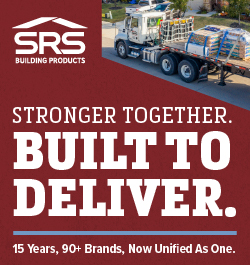
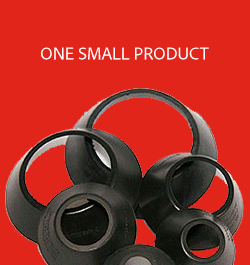


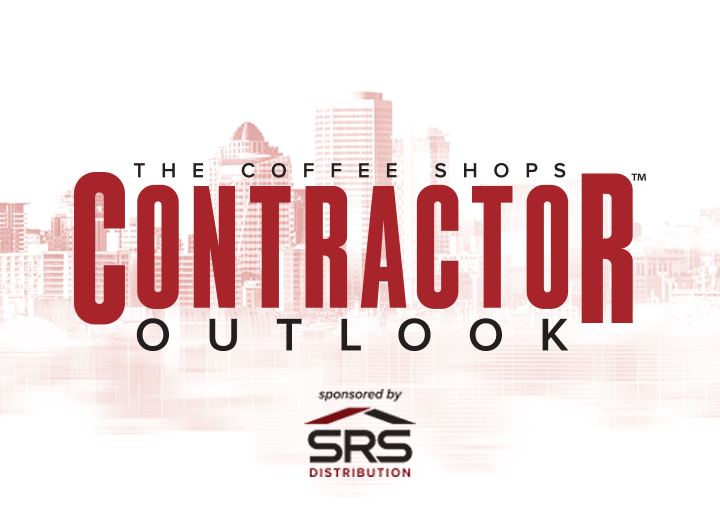

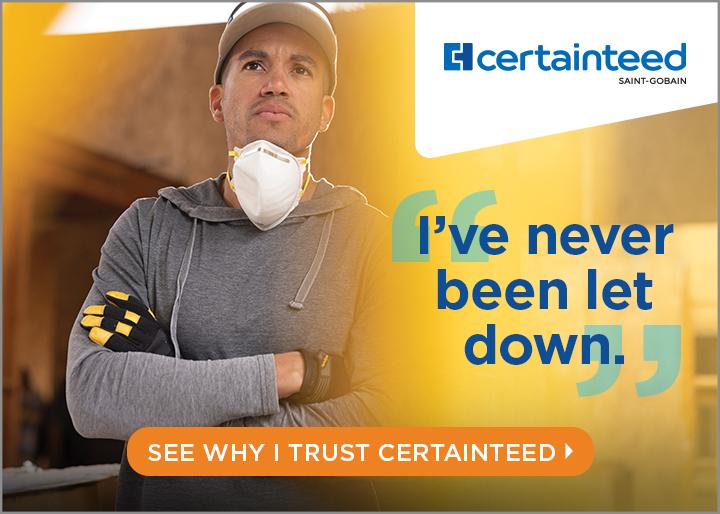
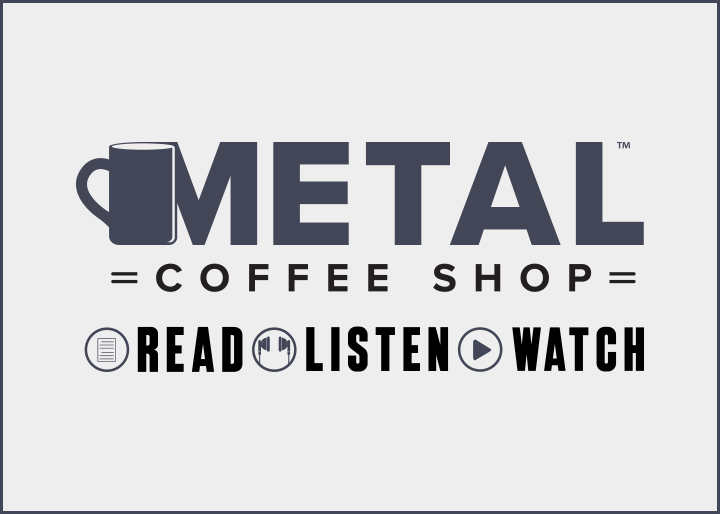

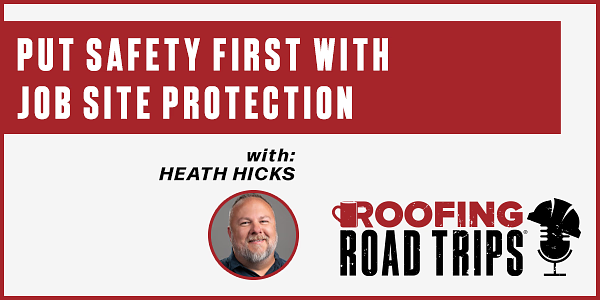

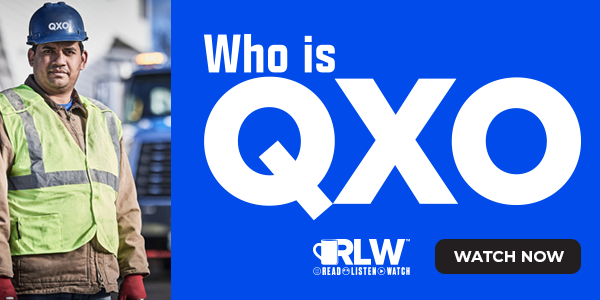
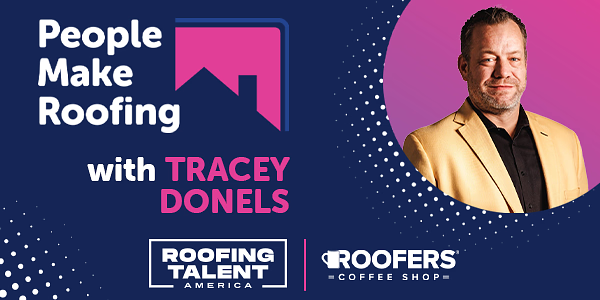

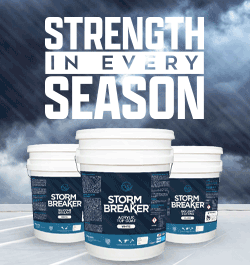



Comments
Leave a Reply
Have an account? Login to leave a comment!
Sign In